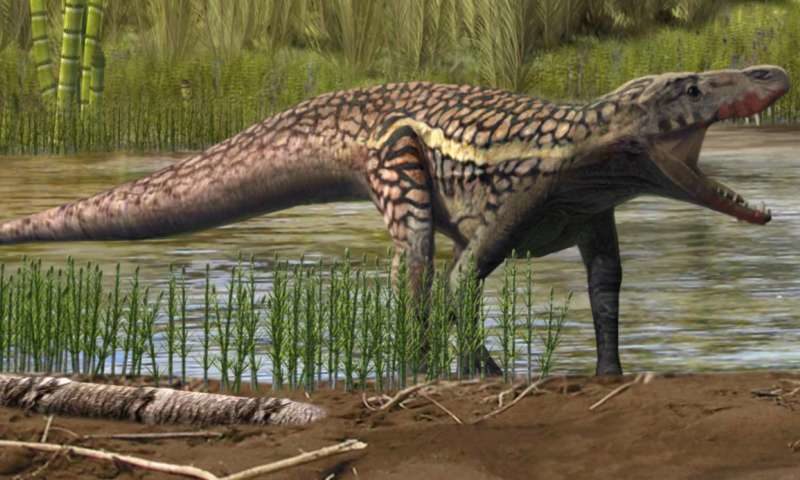
The Permian mass extinction resulted in the loss of 90 percent of species. The environmental and climactic conditions hindered the recovery of vertebrate species following this devastating event.
To investigate which vertebrates lived during beginning of the Mesozoic Era, which followed the Permian extinction, Mujal and colleagues examined trace fossils of vertebrates in the Pyrenees mountains in Catalonia from approximately 247 to 248 million years ago. The researchers made 3D models and created silicone molds of these ephemeral fossils, enabling them to preserve the fossils in scientific collections.
The researchers identified that most tracks were made by archosauromorphs, the ancestors of crocodiles and dinosaurs. The majority were small, about half a meter in length, although a few specimens were longer than three meters. The researchers also identified a new footprint, Prorotodactylus mesaxonichnus, and the new fossil evidence from the Pyrenean tracks suggests that at least the Pyrenean Prorotodactylus genus is related to archosauromorphs, rather than being a dinosauromorph as previously thought from other records.
The authors suggest that the abundance of archosauromorph fossils in the Pyrenees provides evidence that archosauromorphs may have played a large role in vertebrate recovery following the Permian mass extinction. Further research could explore how the archosauromorph lineage may have evolved and spread following this time period.
"Trace fossils are evidence that archosauromorphs dominated the fluvial environments of the Catalan Pyrenees during the Triassic vertebrate recovery, early after the end-Permian mass extinction," says Mujal.
More information
Mujal E, Fortuny J, Bolet A, Oms O, López JÁ (2017) An archosauromorph dominated ichnoassemblage in fluvial settings from the late Early Triassic of the Catalan Pyrenees (NE Iberian Peninsula). PLoS ONE 12(4): e0174693. DOI: 10.1371/journal.pone.0174693
Journal reference: PLoS ONE
Provided by: Public Library of Science



Reader Comments
to our Newsletter